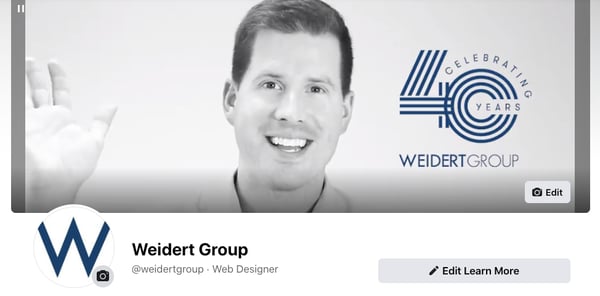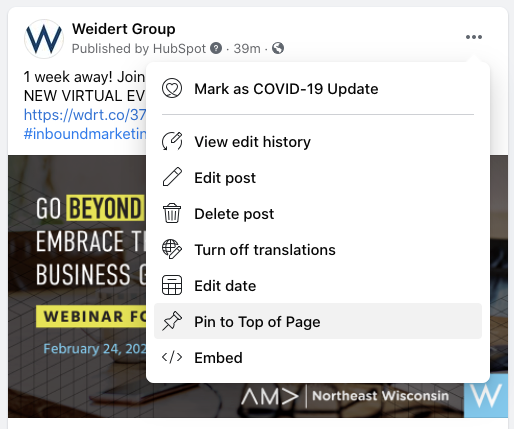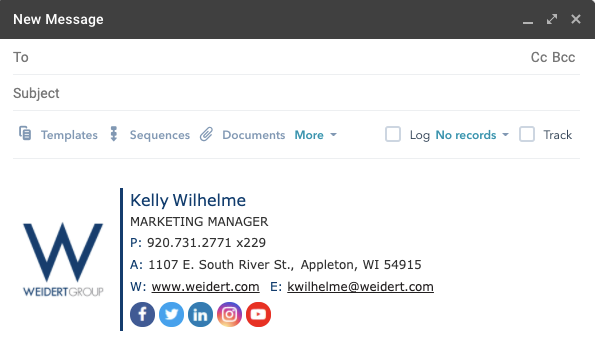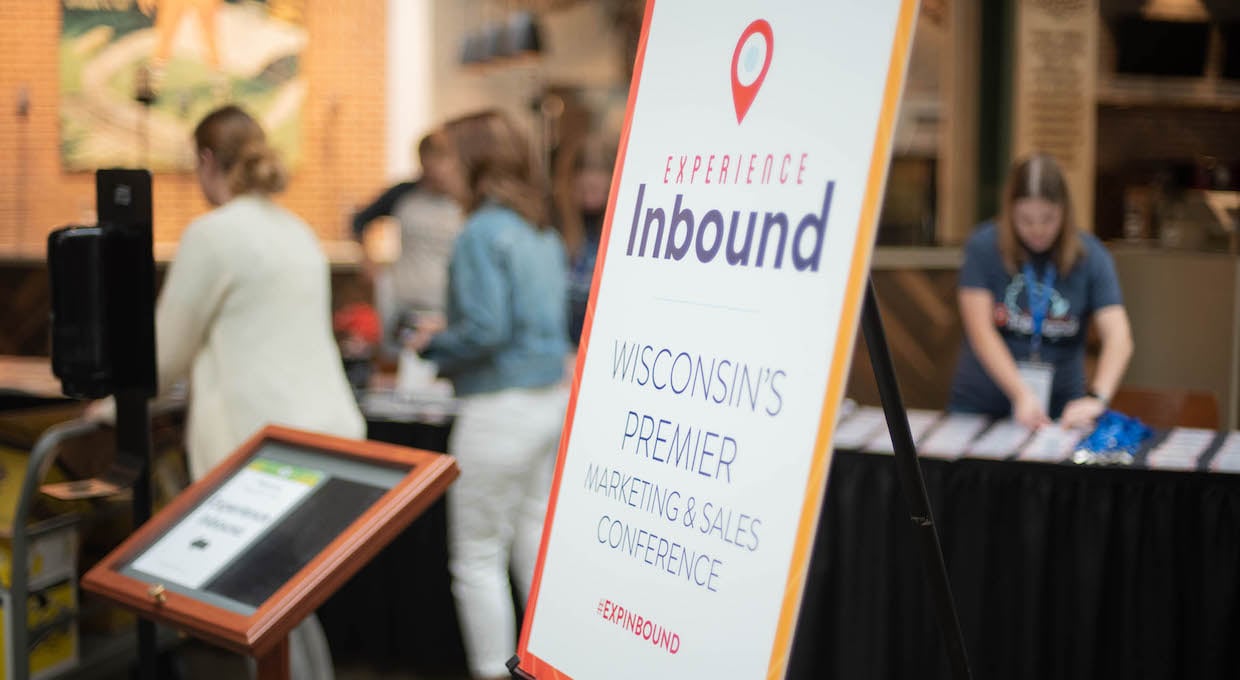5 Easy Steps to Revive Your Inactive B2B Social Media Profiles
Written by
It’s probably been a few years since you decided your company would benefit from a social media presence. You launched a Facebook page or Twitter account for your business, but you didn’t keep it up-to-date.
It seemed like a good idea at the time, and yet here you are, considering how to revive an inactive Facebook page.
Here’s the thing: It was a good idea then — and it still is.
While B2B social media marketing tactics differ from CPG companies’ use of social platforms, there are good reasons for B2B industrial marketers to establish profiles, get active, and stay that way — especially on Facebook and Twitter.
Social media platforms can serve as key distribution channels where you can share content such as blogs, guides, video content, infographics, and more — strengthening your position as a thought leader. That’s in addition to the foundational brand awareness value of your presence.
Your presence can also serve as a social listening tool, helping your teams glean insights and deepen customer empathy.
With all that potential, how could things go wrong?
If it’s been a while since you’ve done much with your company social media, then you know you’re not tapping into its true value. On the contrary, your hibernating profiles could be dragging down your brand in the public eye.
A few things may have changed since you were last active out there, so your use of social media will likely shift away from solely promotion and move toward engagement, education, and content distribution. Let’s get started rehabilitating those accounts.
Why not just delete all your social media profiles and start over?
We understand if you bristle at the thought of attracting eyes to a neglected page or profile — it’s not exactly your best look. Even so, there are good reasons not to make a rash decision to just delete your old content and start over with a new business account for Twitter or Facebook.
Consider what you lose: your Facebook page name, followers, and all your posts. Facebook page names aren’t recycled, and they’re first-come, first-serve, so it could be harder than you think to replicate the quality of your existing name. Page name changes can be requested, but remember, changing your name means changing all existing links to your Facebook page, wherever they are (website, email signatures, etc.).
Any links you don’t update will become dreaded 404 errors.
Twitter’s a little different, but it’s still important not to deactivate your account while it still has your business username and email address, because deactivating voids them for use. You don’t want to act rashly and make the process harder on yourself.
It’s still important not to deactivate your Twitter account while it still has your business username and email address, because deactivating voids them for use.
Here’s our simple, step-by-step guide to resuscitating your social media accounts and moving forward in a professional, productive way.
1. Recover old passwords.
Maybe the intern or employee who created your profiles is long gone, or maybe you’ve just forgotten your login information. Either way, logging in is the critical first step in your social media renaissance.
Fortunately, you can find guidance from Facebook and Twitter to get back in and get to work. If your Twitter account has been inactive for more than six months, it may have already been removed. Facebook also offers help for issues with your page, including reporting.
2. Update your profile information and images.
If it’s been a while since you were inside, you’ll probably need to take a look around at new features and changes on platforms such as layouts, character limits, policies, and more.
Whether you’re on Facebook or Twitter, start in the upper left corner and work your way through. Imagine you’re rummaging through drawers and dusting off cobwebs as you update contact info, links, logo, and cover photos. Make sure your brand is visible, and you’re easily identified at a glance.
On Facebook, start in “About,” and review everything: your business name, address and contact info, description, hours of operation, links, and more. To update cover and profile photos, just hover your cursor over the image you want to change and click the camera icon that appears.

On Twitter, just click “Profile” on the left-hand side to make similar changes.
.png?width=600&name=pasted%20image%200%20(3).png)
Make sure your profile and cover images are sized appropriately. HubSpot offers a guide on sizing images for the most important social platforms.
3. Reassert your presence.
A bit of good news: Your fans and followers might not have even noticed your absence. Social media is a noisy space, and changes to platforms have made Facebook pages less about promotion and more about interaction and engagement with your business audiences. So if you haven’t been posting, your followers haven’t seen you come up in their feeds.
That means you don’t need any big announcement or fanfare around your social media refresh. Once your page or profile is updated, jump in. It’s a good idea to pin a post at the top of your Facebook page, not calling yourself out so much as low-key reintroducing your brand presence. You can pin a Tweet, too (here’s how).

4. Increase likes and followers.
You’ll want to actively seek out and engage with your social media target audience. Remember back when you invited friends to like your Facebook page? Well, you may have to get a little more creative this time. A systematic approach is also important.
First off, you can cross-promote your social media profiles on your other owned platforms and distribution channels. If growing your social media audience is a priority, consider tactics like a slide-in on blog posts or website pages, or add a callout with a link in nurturing emails. Consider the places where your engagement is healthy, and make the most of those opportunities.

Social media sites’ paid ad options are another great opportunity to break through the noise and target specific audiences, too. You can boost Facebook posts and promote Tweets to increase reach and encourage better engagement. But be sure to have a structured plan in place before you go all in.
5. Create a plan to stay active and engaged.
Once you’ve re-established your social media presence, it’s vital to harness your momentum and stay active. You can prevent lapses in activity by including social media in your content strategy, incorporating social posts into content creation templates, and making it a practice to use social media to distribute relevant content: blog posts, new infographics, and other updates.
Using social scheduling tools ensures you always have fresh posts on the horizon — and their tools can also help you monitor brand mentions and stay engaged with followers.
Like every other aspect of your inbound marketing strategy, you should monitor and measure your social media posts’ effectiveness, and use the data to make ongoing improvements. HubSpot makes it easy to connect social media accounts, create and publish posts, and analyze their performance on a regular schedule.
With proper targeting and careful selection of the content you distribute, social media marketing can play an important role in your B2B inbound marketing program. You can learn more about how to optimize your inbound strategy for business growth, and how to select and deploy the best tactics for your goals, when you check out our guide, How to Improve Your Inbound Marketing Efforts. Just click the link to get started.
Subscribe To Our Blog
Information. Insights. Ideas. Get notified every time a new Weidert Group blog article is published – subscribe now!
You May Also Like...

Artificial Intelligence
AI Agents Are Here—How Smart Businesses Are Using Them Now

Inbound Marketing
Podcasting Playbook: What We Learned After 100 Days of Running a B2B Podcast

Weidert Group News
Experience Inbound 2025: What’s Working Now (and What’s Next)
Accelerate Your Growth with
Weidert Group
If you’re ready to explore a partnership, request a personalized consultation with our team.

